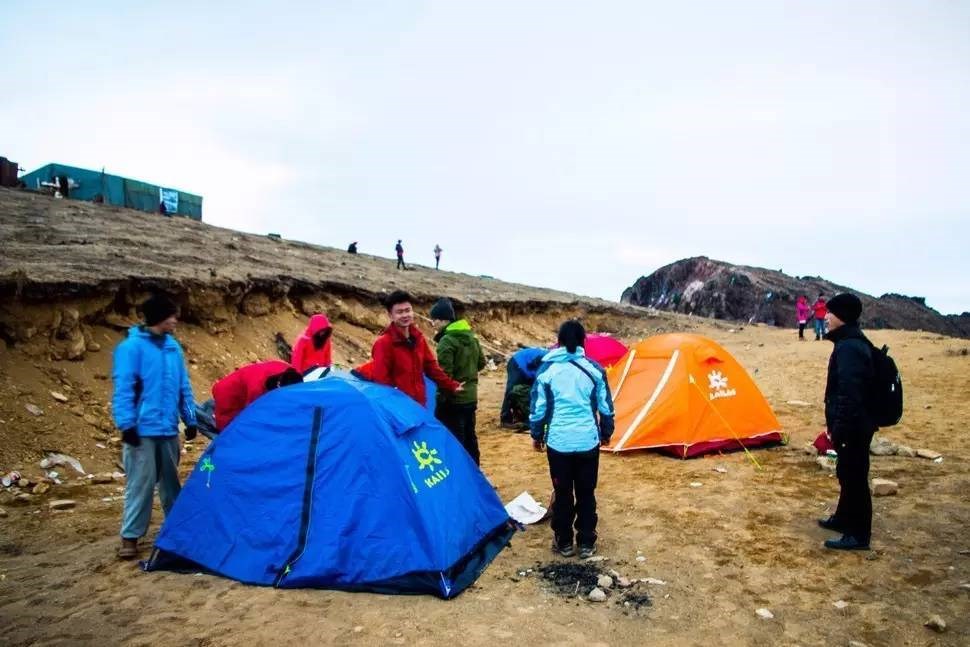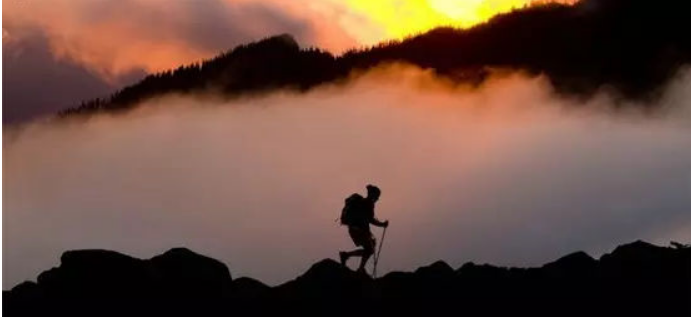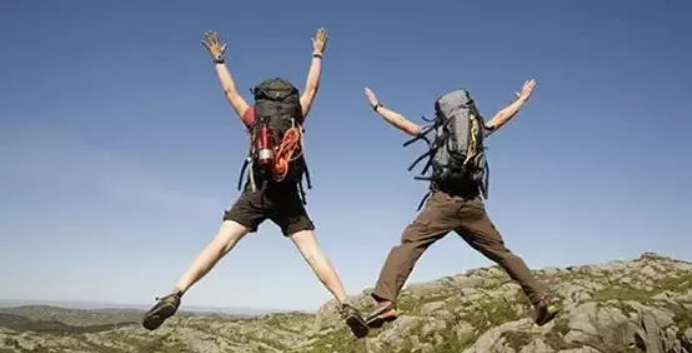If you want to engage in camping adventure sports for the rest of your life, the following 10 tips will help you make preparations and ensure your personal safety when you get lost in the wild. Whether you want to spend your vacation at home or take an adventure on the Appalachian Trail, or whether you have experience in camping or not, here are some things worth noting.
Find or build a residence before dark.
The most important camping technique is: You must camp before dark. You need to decide the type of camp according to your own ideas, whether it is a tent, a camper or a cabin. Some adventurers use the sky as the cover and sleep in simple hammocks. If this is too hard for you, you can consider bringing a tent during your camping adventure. Although a tent is the most basic shelter in camping, it is also very comfortable if properly prepared. It is best to consult the salesperson of an outdoor sports store about a tent that best suits your needs. The suitability depends on the size, shape and weight of the tent. Remember: the bigger the tent does not mean the better-after all, you have to take it to the camp. Be sure to try the tent first at home to check if there is a problem, so that you will not have trouble when camping. Bring spare tent poles just in case the poles break down from time to time. Open the window or open two small openings at night to prevent the tent from getting too wet. Bring an old bathroom curtain (smaller than the area of the tent floor) so that if it rains, you can spread it on the floor to keep the floor dry.
Choose sleeping bags according to the time
The most important technique related to sleeping bags is to choose a sleeping bag suitable for the season. In the warmer months, you can choose a lightweight sleeping bag, but in winter you need a sleeping bag that can withstand low temperatures. Choose a sleeping bag that can be used within a certain temperature range and keep you warm and comfortable. The rated temperature should be lower than the temperature in your camping plan to prevent cooling down. If you spend the night in a tent, choose a sleeping bag in the shape of a mummy. This sleeping bag can tightly wrap your feet, keep your body warm, and it is easy to carry. In terms of material, man-made fiber sleeping bags are easier to dry than down sleeping bags and will not cause allergies. But the goose down sleeping bag is easy to carry because of its light weight.
In order to improve the quality of your sleep when using a sleeping bag, you can put a cushion under the sleeping bag so that you can sleep more comfortably. You don’t need to bring a pillow. You can use a durable plastic bag to replace the pillow under your head after inflating.
Only bring essential food
Camping skills that do not involve food and water are incomplete. No matter whether your camping trip is risky, such as hiking and kayaking, or just resting in a camper, watching DVDs, you need food. The rule of thumb is to bring only the food that is expected to be necessary for each meal. For example, if your team is small, bring two cups of instant oatmeal instead of a whole jar of oatmeal. Use airtight plastic bags to mix food. If you camp next to a camper or car, you can use a cooler to store perishable food such as meat so that it will not spoil.
Ensuring clean water is one of the most basic skills for camping. Unless you have access to clean drinking water yourself, or you know that there is a spring that is safe to drink, it is best to take bottled drinking water with you. Or you can bring a small packet of iodine so that you can disinfect water taken from the wilderness or possibly unclean water. You can also filter the cleanest water you can find, or boil it for at least ten minutes. In addition, wrap the cup with a layer of aluminum foil so that the water can cool down as quickly as possible.
Don’t leave a trace
Because you are camping in an open place, you must keep the next camping tip in mind: this will help protect and maintain the natural environment, so that we and future generations can share the beauty of nature. Leaving no trace means that the camp should be cleaned up before leaving so that the ecological environment is not disturbed. Clean up thoroughly after meals and keep food away from the ground.
Although this may seem like common sense, you may not be able to do the above without leaving a trace. If you plan and prepare in advance to travel in a small group, make sure that your range of activities is at least 60 meters away from rivers and lakes. Travel and camp according to pre-established routes and camps. Bury solid waste 15 to 20 cm below the surface. Take a bath or wash the tableware also 60 meters away from rivers and lakes. The used water should be filtered, put the filtered material into an appropriate waste container, and then splash the water around. Don’t destroy the ruins and natural landscapes you find. The area of the camp should be as small as possible, use the built fire, and cook with the stove. Keep away from wild animals and plants, and don’t feed animals casually.
Wear suitable clothing
Even if you are not a fashion-conscious person, preparing an outfit for outdoor adventures is as important as other skills. Wear loose and neat clothes. Of course, in colder months, you need to wear more clothes than warmer seasons-such as hats, gloves, jackets and thermal underwear. The secret is to take off a few layers of clothing before you start to sweat so that you can keep your body dry. If sweat soaks the clothes, it will feel uncomfortable.
Then, choose shoes. You need to protect your feet when camping. Wear closed-toe shoes so that the lining can absorb some sweat more or less. Hiking shoes are ideal. One way to prevent blisters during hiking is to put a layer of soap under the ankles and toes before setting off. Carry soap with you. If your feet are about to wear out, you can put soap on the areas that may be problematic.
Be sure to bring a rain poncho to prevent it from raining; the last thing you want to happen is that your clothes are soaked. Wearing wet clothes may cause hypothermia.
Avoid bugs, bears and poisonous plants
This technique is about bugs, bears and poisonous plants. When you are setting up a tent or other accommodation, pay attention to the presence of wasp nests, other insects and bugs. If you often go to plants, it is best to wear a long-sleeved shirt and long pants. Spraying insect repellent can also protect against insects. Always check for lice bites.
You may know that you should avoid poison ivy and know how to distinguish its three leaf clusters. Be careful with poison ivy and poison sumac-more plants than those without clusters of three leaves. When you are near plants, shrubs, and woods, wrap your clothes from head to toe to reduce the chance of rashes. It is best to carry calamine lotion and antihistamines or anti-allergic agents with you to prevent something irritating.
As we learned earlier, proper storage and handling of food can prevent bears from entering your wild meal. Keep food away from the ground, such as hanging from a rope or on the branches of tall trees.
Avoid getting lost
Experienced camping enthusiasts know this technique, so be sure to keep it in mind: avoid getting lost. This is the main mistake that campers make, but as long as you keep carrying some simple tools, you can avoid getting too far away from the camp and getting lost. Compass, maps and GPS devices can all prevent loss. Of course, if you don’t know how to use these tools, they are useless. Therefore, before starting your camping trip, please learn how to read maps, use compass and GPS (in addition, when you read the entire article, you can learn more camping skills so that your trip will not be unexpected.
Carry a lifesaving backpack
When you are camping, nothing is more correct than the famous saying of the Boy Scouts to “be ready”. When you leave the camp for an adventure, bringing a life-saving backpack is an absolutely necessary skill. So what should be packed in this backpack? First of all, there should be water purification medicine, a water purifier and a metal cup. Then, bring a life-saving knife, which can be used to hunt, protect yourself and send distress signals. It is more useful than a regular blade and is worth buying from camping and outdoor stores.
Another thing that must be packed in a life-saving backpack is a waterproof match in a sealed container. Waterproof matches can be made with ordinary matches dipped in nail polish or paraffin wax. Plastic medicine bottles and 35mm film packaging boxes can be used to hold waterproof matches, and it is very convenient. A flashlight is also needed in the life-saving backpack, and some spare batteries are placed in a sealed container like waterproof matches. It is also a good choice to bring a flare gun and LED emitter.
In addition to bringing a life-saving backpack, you also need to bring a first aid kit with you. There should be bandages, wound cleaner, medical gloves and ice packs inside.
Pay attention to maintaining hygiene
We mentioned the importance of cleanliness in the above tips on dressing. There is no doubt that keeping your body clean is equally important. But you may be wondering how to maintain hygiene in less than ideal conditions. Put a bottle of hand sanitizer in your pocket and wash your hands before eating, drinking, or wiping your face with your hands. Dip a cotton ball with rubbing alcohol and wipe the insensitive parts of the body. Take a bird bath, using sponges, a basin of water and biodegradable soap to take one or two baths a day. Brush your teeth with purified water and toothpaste or baking soda, then you can use dental floss. During camping, your feet will be very dirty, so when you encounter a river, take off your shoes and soak your feet in the water for a few minutes. Don’t use colognes, perfumes, and scented lotions, because they attract bugs.
When packing up, wrap sanitary utensils, such as towels, toothbrushes, and soap in aluminum foil separately, so as not to wet other things in the backpack.
Take extra precautions when camping with children or pets
Camping with children or pets will consume a lot of energy, but it can also be an enjoyable experience. As we have learned, the secret of a successful camping lies in advance planning. It determines whether the camping between you, your children and your furry friends can last to the end. Be sure to bring suitable clothes to protect your children. In summer and hot weather, you must have a sun hat, and if the temperature drops suddenly, you must have long-sleeved clothes that the children can wear. Then, like a fire drill, help your child learn how to prevent getting lost, and what to do if he gets lost. Bring flashlights or glow sticks to each child, remind them of the camping rules several times a day, and remind them what to do to ensure safety. If you bring your dog on a camping trip, you can make a simple residence feel at home. But you need to consider whether you are ready and willing to control your pet when there are wild animals or domestic animals passing by. In addition, make sure that the pet is vaccinated and the permit is within the validity period. Of course, you must also bring the dog’s leash so that you can contain it at any time. Prepare clean bowls for dogs to hold food, fresh and clean drinking water, and properly clean up and dispose of pet waste.
Post time: Nov-12-2020


